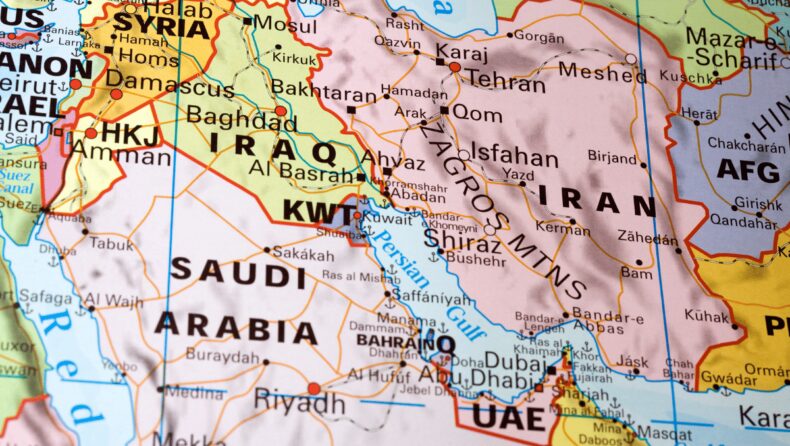On Friday, March 10, Iran and Saudi Arabia reached an agreement to restore diplomatic relations and reopen their embassies after seven years of tension.

This significant diplomatic achievement, which was brokered with the help of China, reduces the likelihood of direct and proxy conflicts between the two Middle Eastern nations in the region. The deal was struck in Beijing this week amid the National People’s Congress and marks a significant diplomatic triumph for the Chinese. The Gulf Arab states see the US gradually retreating from the broader Middle East, and the deal is seen as a major victory for China in this context.
The timing of the agreement is significant, as diplomats have been working to resolve the prolonged Yemeni conflict, in which both Iran and Saudi Arabia have been deeply involved.
JOINT COMMUNIQUE BY IRAN AND SAUDI ARABIA
A joint communiqué was released by the two countries on the deal along with China, which brokered the deal. Iranian state media, on March 11, posted images and videos of Ali Shamkhani, the secretary of Iran’s Supreme National Security Council, along with Musaad bin Mohammed al-Aiban, who is the Saudi national security advisor, and Wang Yi, one of the most important and senior diplomats in China.

Iran and Saudi Arabia have called for the reestablishment of diplomatic ties and the reopening of embassies “within a maximum period of two months.” In a video broadcast by Iranian media, Chinese Foreign Minister Wang Yi could be seen offering “wholehearted congratulations” and praising the two countries for their “wisdom” in reaching the agreement. Wang also emphasised China’s full support for the deal. China, a significant purchaser of Saudi oil, hosted Iran’s President Ebrahim Raisi last month and is crucially dependent on oil-rich Gulf Arab nations for its energy supplies. In December, Chinese President Xi Jinping visited Riyadh to hold talks with Gulf Arab leaders.
NUCLEAR ANGLE
The agreement comes as Iran speeds up its nuclear programme after two years of failed attempts by the United States to revive a 2015 nuclear deal, which the then President Donald Trump had pulled out of. The US wants to stop Tehran from producing a nuclear bomb. According to Brain Katulis, from the Middle East Institute, the latest agreement between Iran and Saudi Arabia offers a “new possible pathway” for the US and Israel to reopen stalled talks on Iran’s nuclear programme, with a potential partner in Riyadh.

SAUDI ARABIA-IRAN RELATIONS
The relationship between Saudi Arabia and Iran has been marked by deep-rooted tensions and conflicts for decades. The two countries have long been regional rivals, with different religious and political ideologies that often clash.
Historical Context: The roots of the Saudi Arabia-Iran conflict can be traced back to the 1979 Iranian Revolution, which overthrew the country’s monarchy and established an Islamic republic. The new government in Iran was led by Shia Muslim clerics, which sparked concern among Saudi Arabia’s Sunni Muslim leadership. The Saudis feared that Iran would use its newfound Islamic revolutionary zeal to promote its own brand of Shia Islam and undermine the legitimacy of Sunni Muslim states, including Saudi Arabia.
Geopolitical Tensions: Saudi Arabia and Iran have been involved in several proxy wars and conflicts throughout the Middle East, supporting opposing sides in regional conflicts. For example, in Syria, Iran has backed the regime of President Bashar al-Assad, while Saudi Arabia has supported rebel groups seeking to overthrow Assad. In Yemen, Iran has supported Houthi rebels, who are fighting against the Saudi-backed government.

Source: REUTERS-Khaled Abdullah
Religious Tensions: Saudi Arabia is a predominantly Sunni Muslim country, while Iran is predominantly Shia. Both countries see themselves as leaders of their respective branches of Islam and seek to promote their own religious ideologies in the region. In 2016, Saudi Arabia executed a prominent Shia cleric, Sheikh Nimr al-Nimr, which sparked protests in Iran and led to the storming of the Saudi embassy in Tehran. Saudi Arabia responded by cutting diplomatic ties with Iran and encouraging its allies to do the same.

CONCLUSION
Given the complex nature of the Saudi Arabia-Iran conflict, a lasting resolution is unlikely to be achieved anytime soon. The latest agreement brokered with the help of China is a significant achievement in reducing the risk of direct and proxy conflicts in the region. However, it remains to be seen whether this diplomatic breakthrough will lead to a sustained improvement in the relationship between Saudi Arabia and Iran or whether the tensions will persist.












